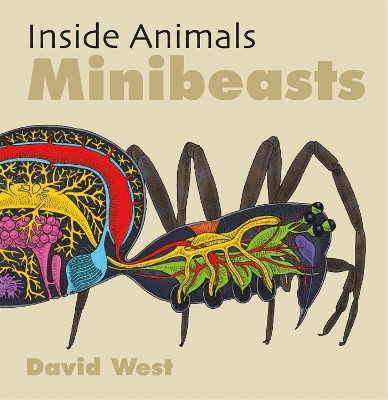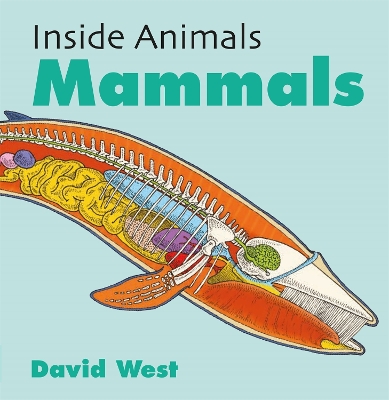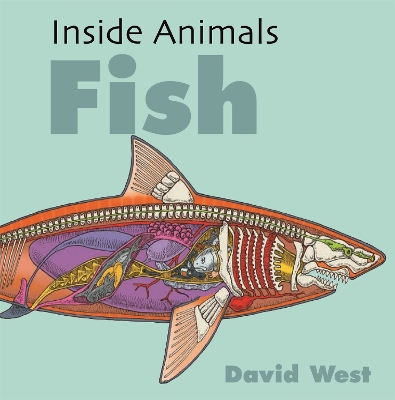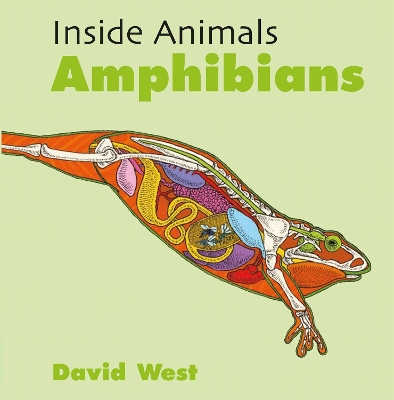Inside Animals
6 total works
Introduces children to the anatomy of animals with cutaway illustrations
Enrich your knoweldge of marvellous minibeasts! See what a spider really looks like inside, discover how an insect breathes and find out where bees store their venom, plus many more minibeast facts.
The Inside Animals series introduces children to the anatomy of animals with cutaway illustrations, with the outer image followed by the inner image over the next page, so children can understand exactly how anatomy works. There is also a handy glossary at the back to explain key scientific terms in an accessible way.
Perfect for any curious 6-8 year old or budding scientist.
Introduces children to the anatomy of animals with cutaway illustrations
What wonders can you find out about the amazing world of mammals? See what a whale really looks like inside; find out how a cow makes milk and where elephants' babies grow, plus many more dazzling facts about the animal kingdom.
The Inside Animals series introduces children to the anatomy of animals with cutaway illustrations, with the outer image followed by the inner image over the next page, so children can understand exactly how anatomy works. There is also a handy glossary at the back to explain key scientific terms in an accessible way.
Perfect for any curious 6-8 year old or budding scientist.
Introduces children to the anatomy of animals with cutaway illustrations
Discover all sorts of fun facts about fish including how a fish breathes, where male seahorses keep their eggs and what a shark looks like inside.
The Inside Animals series introduces children to the anatomy of animals with cutaway illustrations, with the outer image followed by the inner image over the next page, so children can understand exactly how anatomy works. There is also a handy glossary at the back to explain key scientific terms in an accessible way.
Perfect for any curious 6-8 year old or budding scientist.
Introduces children to the anatomy of animals with cutaway illustrations
Discover all sorts of fun facts about reptiles including what a turtle looks like inside, how a chameleon uses its tongue and where a snake's venom is kept! Perfect for any curious 6-8 year old or budding scientist.
The Inside Animals series Introduces children to the anatomy of animals with cutaway illustrations, with the outer image followed by the inner image over the next page, so children can understand exactly how anatomy works. There is also a handy glossary at the back to explain key scientific terms in an accessible way.
Introduces children to the anatomy of animals with cutaway illustrations
What wonders can you find out about the amazing world of amphibians? See what a frog really looks like inside; find out how a toad catches its food and where an axolotl's lung and gills are plus many more dazzling facts about amazing amphibians.
The Inside Animals series Introduces children to the anatomy of animals with cutaway illustrations, with the outer image followed by the inner image over the next page, so children can understand exactly how anatomy works. There is also a handy glossary at the back to explain key scientific terms in an accessible way.
Perfect for any curious 6-8 year old or budding scientist.
Introduces children to the anatomy of animals with cutaway illustrations
What wonders can you find out about the amazing world of birds? See what a penguin really looks like inside; find out how a birds digests its food and where an ostrich keeps its eggs plus many more dazzling facts about the amazing variety of birds in the world.
The Inside Animals series introduces children to the anatomy of animals with cutaway illustrations, with the outer image followed by the inner image over the next page, so children can understand exactly how anatomy works. There is also a handy glossary at the back to explain key scientific terms in an accessible way.
Perfect for any curious 6-8 year old or budding scientist.





